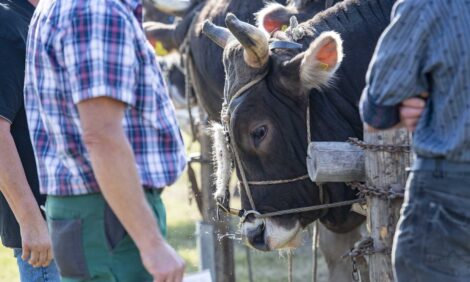



Where the UK is on Bovine Tuberculosis Control and the Badger Cull
ANALYSIS - Along with New Zealand, Australia and Ireland as notable examples, the UK is one of several regions to try addressing bovine tuberculosis by culling the wildlife disease reservoir. Farmer and writer, Jim Webster, gives a state-of-play assessment of what has been done.The UK has a serious problem with TB in badgers and cattle.
To put it in perspective, in the 1950s we had years where we slaughtered over 25,000 reactors. Indeed in the 1940s it was estimated that 40 per cent of all herds contained cattle with TB But a combination of herd tests and culling reactors cut this down until we got down to very low levels, in 1981 it is estimated that less than 0.1 per cent of herds harboured TB.
It was discovered that in certain areas where TB was proving hard to eliminate, the local badger population was infected. A ‘clean ring’ approach of culling the badgers in the setts surrounding a farm with TB was adopted and this helped clean out some areas.
Then policy was changed to allowing only the culling of badgers in setts on the farm in question, even if there was an obviously infected sett just outside the farm boundary. This policy continued from 1987 to 1997 and by 1997 we were up of 0.5 per cent of farms infected with TB.
As an aside it is interesting to note that in 1997 the Political Animal Lobby donated £1,052,000 to the Labour party, up from £127,000 the previous year. In the same year they also gave £50,000 to the Conservative party, unchanged from the previous year, and £50,000 to the Liberal Democrats, up from £29,500 in the previous year. In 1997 the culling of badgers was suspended. Now we’re back to slaughtering over 25,000 reactors a year.
Culling Wildlife for TB Control Globally
The political decision was made, in the face of considerable, vehement opposition, to restart the badger cull on a trial basis.
To anybody reading this from outside the UK this is hardly going to be a surprising decision. Australia has culled diseased populations of feral cattle and Asian water buffalo, in New Zealand, the culling of the brushtail possum has been part of a programme to control the disease, whilst in Minnesota in 2006, the culling of M. bovis infected white-tailed deer helped eradicate TB from the area.
Nearer home, Ireland introduced badger culling in 2004 and is using it successfully to keep control of the disease.
Perturbation Effect
In the trails that were done in the UK one effect that was highlighted was that whilst there was less TB in cattle in the area where badgers were culled, the researchers identified an increase in TB in herds on the perimeter of the cull. This was blamed on the perturbation effect.
It was assumed that the cull reduces the population density but also stresses badgers causing movement of infected badgers which move out of the cull area and proceed to infect cattle outside the zone. This does not seem to have been a problem in the Irish Republic but one of the fears was that the effect might have been real and is one of the reasons given for not culling in the UK.
Testing Perturbation
So the recent culling in two trial zones in Somerset and Gloucestershire is being watched with interest. As of yet there is little official data available.
Not only that but opposition to the cull is entrenched and reasoned argument bad to find. The run-up to a general election was not a time for reasoned argument.
But some preliminary data is available. One example is work done by Roger Blowey, a vet in Gloucestershire area who has many years experience of TB testing cattle.
He has looked at data collected before the cull and compared it with data from the second year of the cull. This shows that the number of cattle testing positive for TB in the pilot cull area has dropped from 29 to five.
Similarly at the level of individual farmers we are seeing farmers coming forward pointing out that their herds have tested negative for TB for the first time for anything up to fifteen years.
Early Days
In a letter to the Veterinary Record Roger Blowey also looked at county figures. Comparing the years 2013 and 2014 (so you might see the effect of the first year of the cull) the level of TB (as measured by the number of reactors slaughtered) in the Western Region fell by 4.5 per cent.
But in those counties in the Western Region where there was no culling the level of TB rose, whereas in those counties where there was culling the level fell. Over the same period in the adjacent area of Wales, where there is no culling, the number of reactors slaughtered also increased by 6.1 per cent.
Obviously it is early days. Some argue that such data as we have is unreliable and cannot be taken seriously. On the other hand nobody has produced evidence of a ‘perturbation effect’ either. So far, so good.
Jim Webster
Freelance journalist
Jim is a freelance journalist and former dairy farmer from South Cumbria. His farm switched to grass-fed beef production in 1999 and he now oversees a farm share agreement incorporating sheep.


